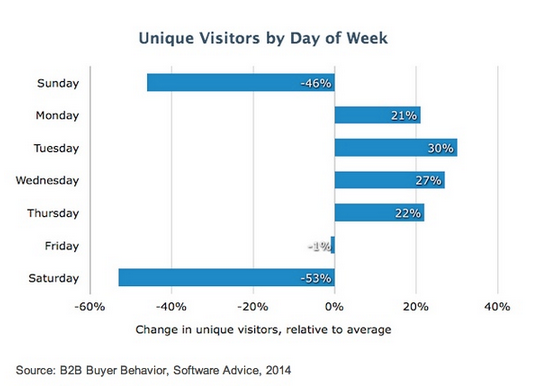Best and worst times to post social media updates (Infographic)
The questions we get asked by management team all over Europe are quite similar whenever it comes to best possible conversion times, or perfect hours and days to posting on social networks, to send out updates and to generate engagement. Although this might be an option to boost your social and web activities, it should be clear to everyone that if we all obey these options, we are challenging our clients more and more in generating engagement.
Above all, not all social media platforms are alike. The user types of social networks are different, depending on whether these are coming with a purchase intent, the idea to keep their friends up to date about their latest spare time activities, or whether they are looking for new job opportunities in career networks. Sentiment, time and openness for your updates might vary from minute to minute.
Mitt Ray summarizes some advice on when could be the best and worst time to publish your updates on Facebook, Google+, Twitter, Linkedin, Pinterest and Tumblr. Take it for whatever it is worth to you…










 The guys at CHEIL in Sigapore have created a nice app for Samsung that keeps us away from texting and driving. With their “Eyes On The Road” app you can switch your phone into a “Drive Safe Mode” and stay away from taking calls, texts, or even push alerts while driving.
The guys at CHEIL in Sigapore have created a nice app for Samsung that keeps us away from texting and driving. With their “Eyes On The Road” app you can switch your phone into a “Drive Safe Mode” and stay away from taking calls, texts, or even push alerts while driving.
